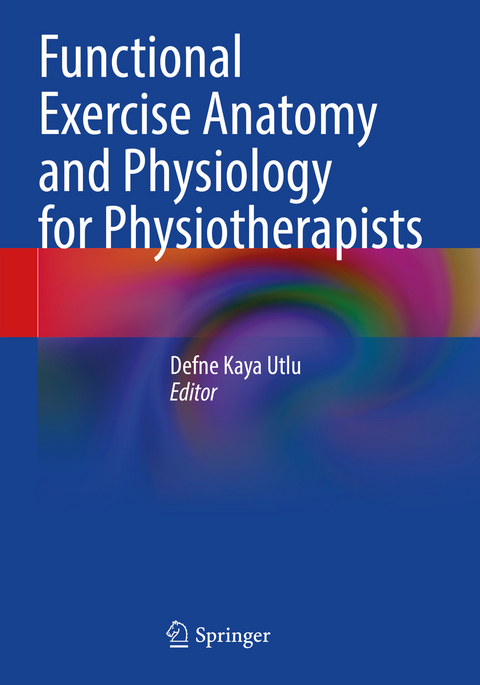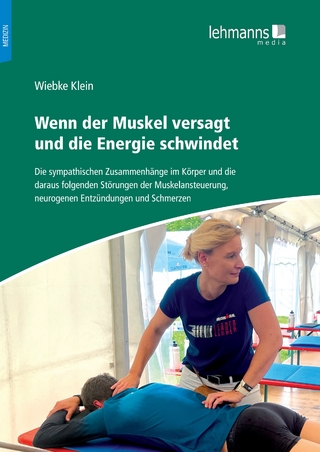
Functional Exercise Anatomy and Physiology for Physiotherapists
Springer International Publishing (Verlag)
978-3-031-27186-1 (ISBN)
This book aims to create a bedside resource for physiotherapists and exercise specialists dealing with a defined movement problem and plan and apply functional therapeutic exercises that can be diversified for the patient.
For physiotherapists, exercise is undoubtedly the greatest weapon in treating diseases and improving health. Functional exercise approaches aim to improve physical performance and activities of daily life by adapting exercise prescriptions to the movements that the individual makes frequently in daily life or in sports. The daily activities vary from person to person due to our different habits and lifestyles. Therefore, functional exercise training should be designed differently for everyone. When designing a functional exercise prescription, physiotherapists should consider previous injuries or surgeries that may limit physical activity, as well as general health, muscular strength, endurance and strength, aerobic capacity, and activities that the patient should do in daily life. The functional exercise prescription should be customized considering both the fragility of the patient due to injury or surgery, and the strengths of the patient such as sports/exercise history and healthy eating habits.The book consists of four different parts: the concepts of exercise and physical activity, exercise types, and prescriptions are presented in the first part. The second part is dedicated to musculoskeletal anatomy specific to functional exercise, while the third part explores functional exercise-specific systems physiology and illustrates the compliance of each system with exercise, basic exercise physiology information, and the evaluation and treatment of individuals who are healthy and have diseases that affect each system. Finally, the book has the part of a special topic dealing with nutrition/nutritional supplements affecting recovery in the rehabilitation process after injury or surgery and supporting physical performance duringexercise/sports.
This book will be of interest to physiotherapists as well as health and sports professionals.
Dr. Kaya Utlu is a professor of the Physiotherapy and Rehabilitation Department at the Hamidiye Faculty of Health Science at the University of Health Sciences, Istanbul, Turkey.
After graduating from Hacettepe University Faculty of Physiotherapy and Rehabilitation in 1999, she started to work as a research assistant in the same place. She worked in the Center for Rehabilitation Science of Manchester University as a researcher in 2007, 2010, and 2012. She graduated from the master's program in 2002 and from the doctoral program in 2008. She also worked as a researcher at the Technical University of Munich (TUM) in September 2008. She became an associate professor in 2013 and a professor in 2018.
Dr. Kaya Utlu worked as an associate professor in the Department of Sports Medicine, Faculty of Medicine, Hacettepe University. She was the founding head of the Physical Therapy and Rehabilitation Department of the Faculty of Health Science at Uskudar Universityand Bursa Uludag University. Dr. Kaya Utlu was the founding head of the NP Physiotherapy Rehabilitation Clinic at Uskudar University, Istanbul, Turkey.
She is a reviewer of many international and national indexed journals. She is an editor/ chief editor of many international and national books. She currently studies on functional exercises, proprioception, techniques of rehabilitation after ankle injury/surgery, knee injury/surgery, hip injury/surgery, and shoulder injury/surgery.
Part I Introduction to Exercise.- Chapter 1. Definition of Exercise, Types of Exercise, Exercise Prescription.- Part II Exercise-Specific Musculoskeletal Anatomy.- Chapter 2. Basic Definitions of Anatomy and Anthropometry.- Chapter 3. Bone and Joint Structure.- Chapter 4. Muscle Structure and Function.- Chapter 5. Nerve Structure and Function.- Chapter 6. Fascia and Movement.- Chapter 7. Axial Skeleton.- Chapter 8. Head and Neck.- Chapter 9. Shoulder.- Chapter 10. Elbow.- Chapter 11. Hand and Wrist.- Chapter 12. Pelvis.- Chapter 13. Hip.-Chapter 14. Knee.- Chapter 15. Foot/Ankle.- Part III Exercise-Specific Systems Physiology.- Chapter 16. Physiological Adaptation.- Chapter17. Cell and Storage.- Chapter 18. Adaptation of the Musculoskeletal System to Exercise.- Chapter 19. Neural System and its Adaptation to Exercise.- Chapter 20. Bioenergetics and Metabolism.- Chapter 21. Respiratory System and its Adaptation to Exercise.- Chapter 22. Circulatory System and its Adaptation to Exercise.- Chapter 23. Endocrine System and its Adaptation to Exercise.-Chapter 24. Renal System, Fluid Balance, and Adaptation to Exercise.- Chapter 25. Immune System and its Adaptation to Exercise.- Part IV Miscellaneous.-Chapter 26. Balance, Coordination, and Proprioception.-Chapter 27. Movement and Nutrition Principles.-Chapter 28. Nutritional Supplements for Musculoskeletal Health.-Chapter 29. Exercise-Induced Anaphylaxis.
| Erscheinungsdatum | 24.08.2024 |
|---|---|
| Zusatzinfo | XIV, 572 p. 396 illus. in color. |
| Verlagsort | Cham |
| Sprache | englisch |
| Maße | 178 x 254 mm |
| Themenwelt | Medizin / Pharmazie ► Gesundheitsfachberufe |
| Medizin / Pharmazie ► Medizinische Fachgebiete ► Sportmedizin | |
| Medizin / Pharmazie ► Physiotherapie / Ergotherapie | |
| Schlagworte | Musculoskeletal anatomy • nutritional supplements • physical performance • system adaptation • therapeutic exercises |
| ISBN-10 | 3-031-27186-6 / 3031271866 |
| ISBN-13 | 978-3-031-27186-1 / 9783031271861 |
| Zustand | Neuware |
| Informationen gemäß Produktsicherheitsverordnung (GPSR) | |
| Haben Sie eine Frage zum Produkt? |
aus dem Bereich


